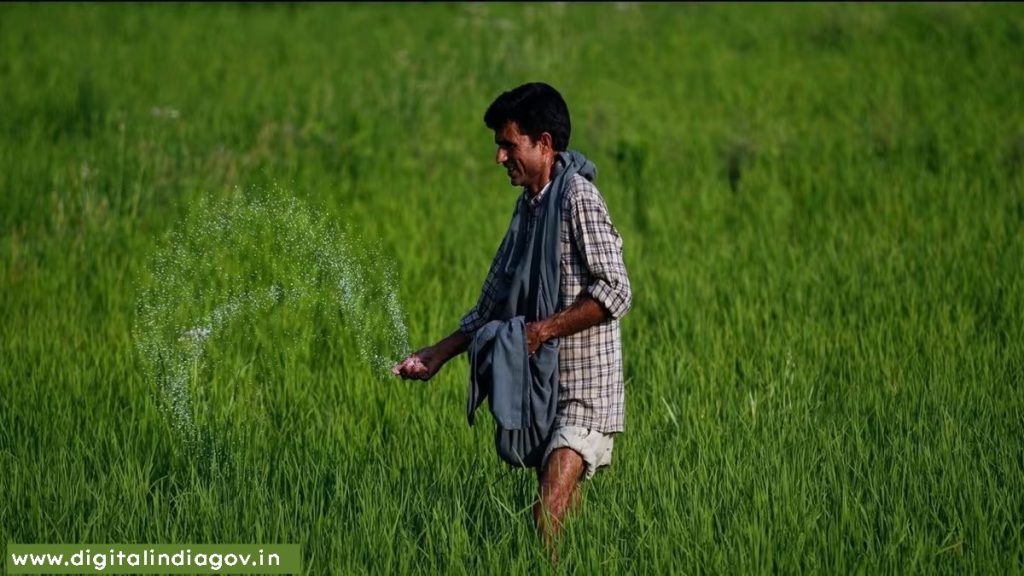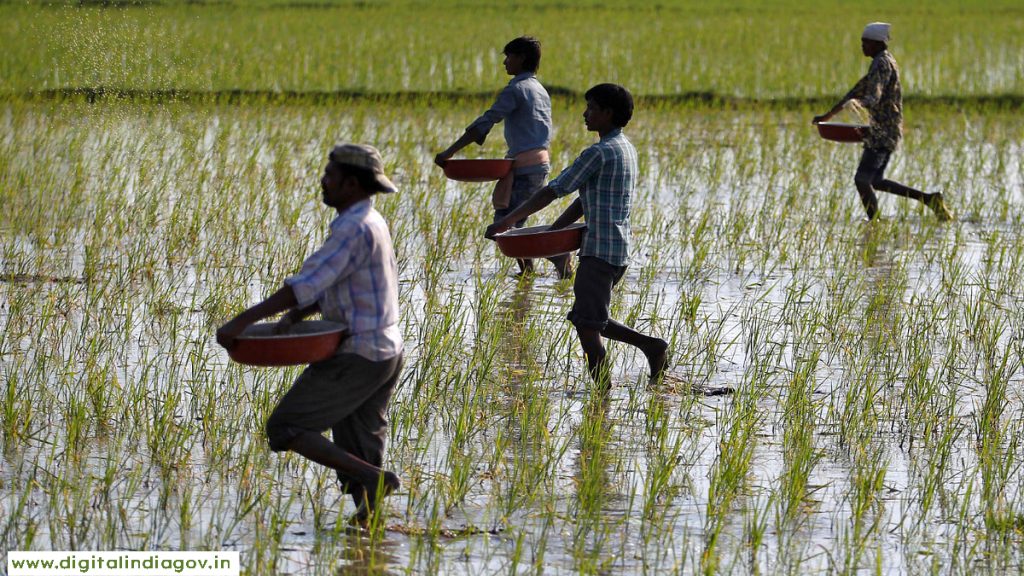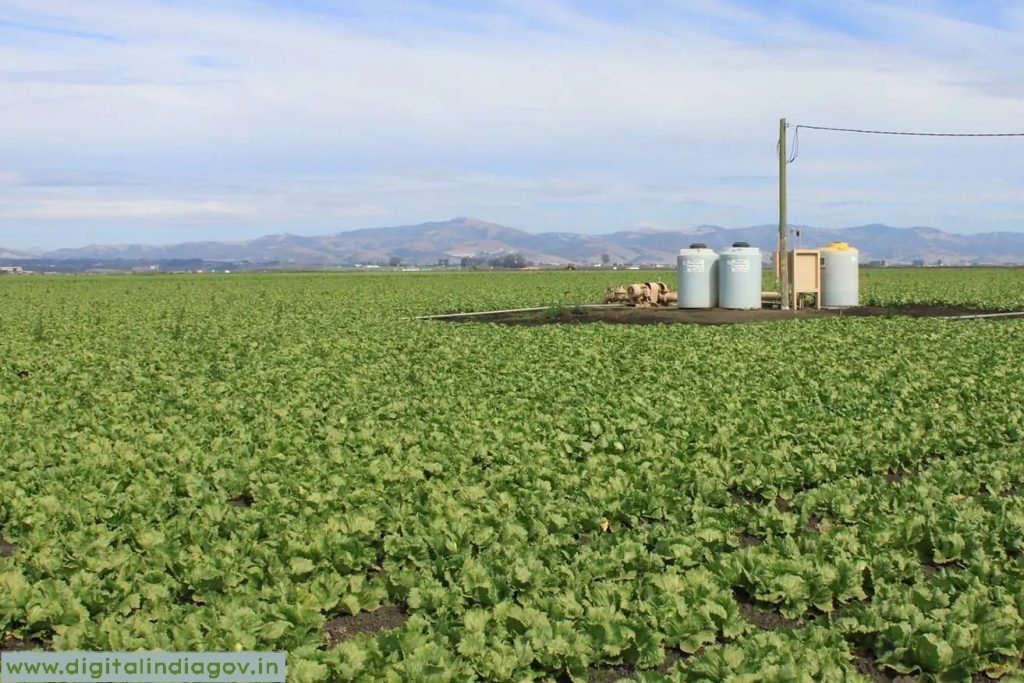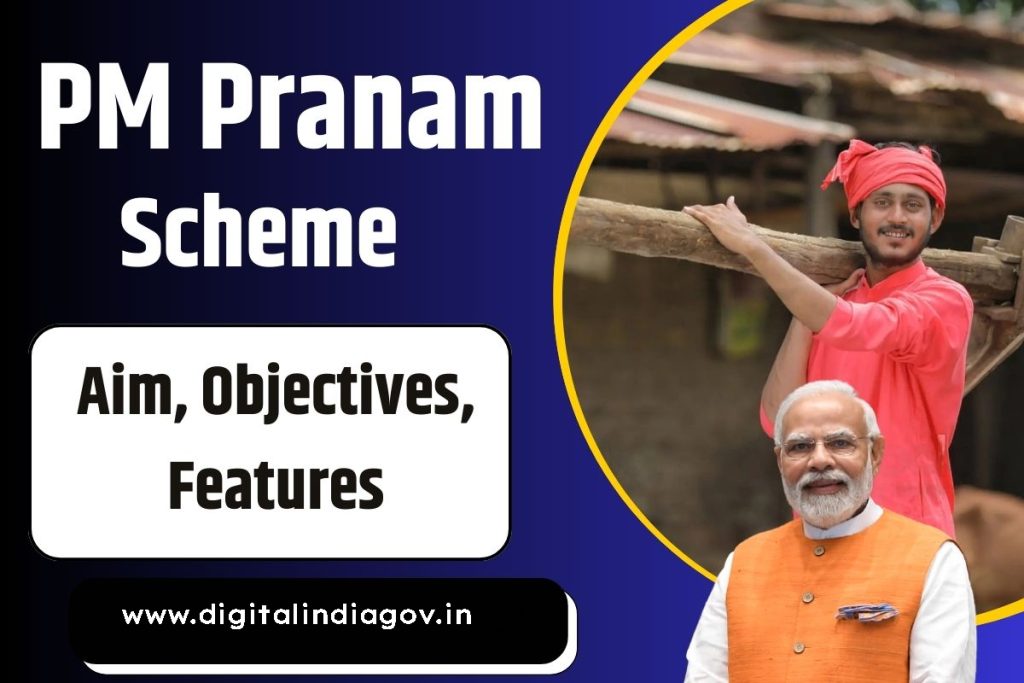PM PRANAM Scheme:-With chemical fertiliser subsidies expected to cost Rs 2.25 lakh crore in the fiscal year 2022–2023, the aim of this program is to reduce the financial burden associated with them. It places emphasis on restoring the health of the soil, protecting the environment, water resources, and biodiversity, as well as increasing farm productivity and financial sustainability.
Contents
PM PRANAM Scheme
- The PM Programme for the Revival, Enlightenment, Enhancement, and Improvement of Mother Earth is its acronym.
- Its main goal is to promote the balanced application of alternative fertilizers while reducing the use of chemical fertilizers.
- With the execution of this initiative, the financial burden of chemical fertilizer subsidies—which is projected to reach Rs 2.25 lakh crore in the fiscal year 2022–2023—will be reduced.
- Moreover, it will strengthen Indian agriculture’s ability to adapt to changing climate conditions. States that maintain a lower use of chemical fertilizers than their three-year average will receive incentives.
- Based on the reduction in subsidies, these states will get a grant of fifty percent, which they can use for projects like developing new assets, integrating technology, and educating people about alternative fertilizers.
- The active participation of farmers, panchayats, farmer-producer organizations, and self-help groups will encourage the reduction of fertilizer usage.
- This program is in line with the government’s emphasis on encouraging environmentally friendly and sustainable farming methods.
- It will supplement current initiatives like PM Krishi Sinchaayi Yojna, the National Initiative on Climate Resilient Agriculture (NICRA), and the National Mission for Sustainable Agriculture (NMSA).

Also Read:- Jagananna Smart Town Scheme, Digitize India, Digitize India Platform, Work from Home Jobs
Important Point
- Following the announcement of the Union Budget 2023, India made a strong push towards ‘Panchamrit’ and net-zero carbon emissions by 2070 in order to lead the way in a green industrial and economic transition.
- The Finance Minister had announced the introduction of a “PM Programme for the Restoration, Awareness, Nurturing, and Improvement of Mother Earth” in an attempt to encourage States and Union Territories to support the balanced use of chemical and alternative fertilizers.
About the PM-PRANAM Scheme
- The program aims to promote the balanced use of chemical fertilizers while encouraging the use of alternative fertilizers in the States and Union Territories.
- The central government will use this program to spend Rs 3 lakh 70 thousand crore over the course of the following three years on farmer welfare.
- The federal government will provide support to the states that cut back on their use of chemical fertilizers.
- In other words, states that reduce their chemical fertilizer subsidies will receive a grant of half of the total amount.
- In September of 2022, the PM PRANAM scheme was proposed at the National Conference on Agriculture for the Rabi Campaign.
Full form of PM-Pranam Scheme
Promotion of Alternate Nutrients for Agriculture Management Yojana
Objective of PM PRANAM scheme.
- The PM PRANAM program aims to encourage the use of alternative fertilizers while lowering the financial burden associated with chemical fertilizers.
- States that implement alternative fertilizers will receive financial incentives under the plan, which will encourage them to use fewer chemical fertilizers.
Funding arrangement in the PM PRANAM scheme:
- This will not have its own budget.
- The money for this will come from the programs’ remaining fertilizer subsidies.
- The state that saves the most money will receive a grant equal to half of the savings on subsidies.
- The development of resources related to alternative fertilizer production units at the village, block, and district levels as well as the technological adoption of alternative fertilizers are eligible to receive seventy percent of this grant.
- Thirty percent of the grant amount remains to be used to provide incentives and rewards to farmers, panchayats, and other stakeholders involved in increasing awareness and reducing the use of fertilizers.
- The way in which the amount of fertilizer used in a given year is compared to its consumption over the three previous years will determine how much more or less is used overall.
- Monitoring fertilizer usage is done through a platform known as the Integrated Fertiliser Management System (IFMS).

Also Read:- Uttar Pradesh Gram Panchayat Voter List
Issues with Fertilizer Usage in India
- Unbalance in Fertiliser Use: The recommended ratio of nitrogen (N), phosphorus (P), and potassium (K) in fertilizers in India is 4:2:1, however, the real ratio greatly differs from this, with too much nitrogen and not enough phosphorus and potassium. Reduced crop yields, degraded soil, and nutrient deficiencies are the outcomes of this imbalance.
- India’s average NPK ratio in 2015–16 was 8:3:1, which is significantly higher than the recommended 4:2:1 ratio, according to an NITI Aayog report.
- Overuse of Fertilisers Based on Nitrogen: India is the world’s second-largest consumer and third-largest producer of urea, a fertilizer based on nitrogen. However, overuse of urea has detrimental effects on greenhouse gas emissions, water quality, and soil health. Because urea subsidies indirectly support the production of other fertilizers, they also distort the market for fertilizers
- Limited Domestic Production and Import Dependency: Due to limited domestic supplies of P and K fertilizers, India is heavily dependent on imports from other countries. India is vulnerable to variations in global prices and availability due to this reliance. Moreover, since the 1990s, India has not invested much in increasing its capacity for producing fertilizer domestically.
- India has a domestic production capacity of 24.66 million metric tonnes of P&K fertilizers, which only meets 50% of the country’s demand, according to the Department of Fertilisers’ annual report. Imports from nations including China, Russia, Morocco, Jordan, and Saudi Arabia help to fill the remaining demand.
- Ineffective Distribution and Subsidy Mechanism: India uses a complicated and expensive system that involves numerous agencies, middlemen, and large leakages to subsidize fertilizers for farmers. This subsidy scheme falls short of promoting the efficient use of fertilizers or the adoption of organic or biofertilizers.
- The Union Budget has always included a sizable amount of funds for the fertilizer subsidy.
Effects of Improper Utilization of Fertilizers
- Pollution of the Environment: Excessive use of fertilizers pollutes the air, water, and soil by converting leftovers and unused portions into pollutants.
- This overgrowth lowers oxygen levels and damages aquatic ecosystems.
- Degradation of Soil: Only the constant application of fertilizers based solely on nitrogen can cause deficiencies in essential macro- and micronutrients and deteriorate soil fertility. It can also harm the microflora and fauna of the soil, which are vital to preserving the health of the soil.
- Diminished Crop Quality: Improper fertilizer application can cause excessive growth in certain plant parts, such as leaves and stems, which can damage fruits and grains that are used as reproductive organs. Crop yield and quality suffer as a result.
- Groundwater Contamination: People who depend on groundwater sources for their drinking water may be at risk of health problems due to nitrate leaching from the overuse of fertilizer. Elevated nitrate levels can cause methemoglobinemia, also referred to as “blue baby syndrome.”
- Hazards to Health: Farmers’ and consumers’ health may be jeopardized by the misuse or overuse of pesticides, herbicides, and fertilizers.
- Economic Strain: Excessive fertilizer use raises input costs without boosting crop yields, which can be financially taxing for farmers, particularly small and marginal ones. Debt is frequently the result of this circumstance.
- Greenhouse Gas Emissions: The manufacture and use of synthetic fertilizers release greenhouse gases into the atmosphere, most notably nitrous oxide (N2O), a strong greenhouse gas linked to global warming.

Also Read:- CG Bhuiya 2024
How can the PM PRANAM Scheme help reform the Fertilizer Regime?
- Decrease in Subsidy Spending: By supporting bio-or alternative fertilizers, PM Pranam may be able to reduce the amount of money the government spends on subsidies.
- The government’s objective to construct 10,000 Bio-Input Resource Centres, which would create a nationwide network for the production of pesticides and micro-fertilizers, demonstrates its dedication to this strategy. By encouraging the use of these biofertilizers, PM Pranam can progressively reduce the costs related to chemical fertilizer subsidies.
- Control of Fiscal Deficit: PM Pranam’s facilitation of a decrease in subsidy costs has the potential to make a major contribution to the management of India’s fiscal deficit. Reduced subsidies can be a useful strategy to address fiscal deficits, which pose significant economic challenges.
- Phased Removal of Chemical Fertiliser Subsidies: PM Pranam may hasten the process of removing chemical fertilizer subsidies one step at a time. The government can gradually cut back on its financial support of chemical fertilizer subsidies by providing assistance and incentives for the use of alternative fertilizers.
- Farmer Fertiliser Cooperative Empowerment: PM Pranam can enable farmer fertilizer cooperatives to increase the amount of biofertilizer they produce. Increased economies of scale and the creation of a wider distribution network for alternative fertilizers can result from this kind of assistance.
FAQ’s
Q. What is the tenure of PM Pranam?
Ans- A three-year implementation period culminated in the unveiling of the Prime Minister PRANAM Scheme 2023 on June 28, 2023. The Yojana intends to offer a subsidy of about 2.25 lakhs.
Q. What is the total outlay of PM Pranam?
Ans- 3,70,128.7 crore rupees
Finance Minister Nirmala Sitharaman revealed the plan during her February budget speech. An official statement from the CCEA stated that a total expenditure of Rs 3,70,128.7 crore was set aside for a “unique package” of creative schemes for farmers.
Suggested Link:-Mobile Number Tracker Online
@PAY
